The 2024 Solar Eclipse Is Coming: Here’s Everything You Need To Know
For a few brief minutes on Monday, a total solar eclipse will blanket sky-gazers across the contiguous U.S. in a stunning astronomical spectacle that won’t happen again for another 20 years.
An estimated 31.6 million people live in the path of this year’s totality and millions more are expected to travel there to catch a glimpse of the celestial event, prompting some governments to launch emergency orders in anticipation of crowds.
Advertisement
“It’s kind of mind-blowing because it happens very quickly,” Dr. Cristina A. Thomas, an associate professor in astronomy and planetary science at Northern Arizona University, told HuffPost of the stunning scene as the moon engulfs the sun. “The animals start to react. The temperature drops. It’s a really interesting experience from that perspective.”
Here’s everything you need to know about the eclipse and how to prepare for it, whether you’re in the path of totality or not.
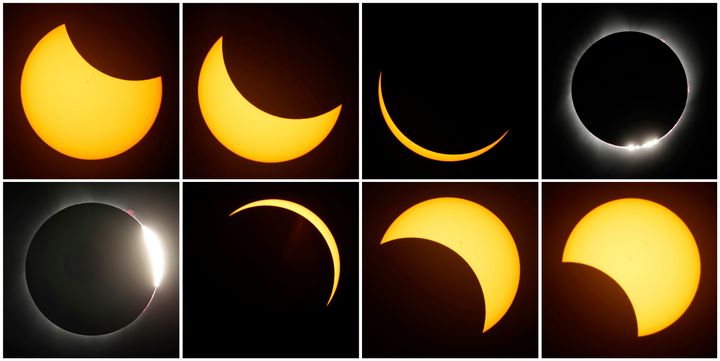
via Associated Press
What Is It And How Is This Year’s Different?
A solar eclipse is when the moon passes between the sun and Earth, either blocking the sun partially or in totality.
Advertisement
While partial solar eclipses occur at least twice annually, the chance to see a total solar eclipse like the one on Monday is rare. The last one viewed from the contiguous U.S. was in 2017 and the one before that was in 1979. The next total solar eclipse ― again, able to be seen from the contiguous U.S. ― will be in 2044.
Not everyone in the U.S. will see the sky go completely dark, however. The only place to witness a total eclipse is in its moving path of totality, which on Monday will have a width that’s fortunately nearly double the size of the last eclipse. Its path will also cover more cities and densely populated areas than the last one, allowing more people to view it, according to NASA.
The moon’s shadow will move along this path at about 1,600 miles per hour, blanketing everything in darkness. Because of its high speed, the show will be a fast one, lasting roughly three to four minutes, depending on the location it’s viewed, said Thomas. (The longest duration of 4 minutes and 28 seconds will be near Torreon, Mexico, according to NASA.)
But even if you’re not in the path, it’s still worth going outside to see a partial eclipse.
“I do encourage people, even if they’re outside of the path of totality, to try to find some glasses and to go outside and take a look because it’s not something that we get to see all that often,” Thomas said.
Advertisement
Where To See The Total Or Partial Eclipse
The eclipse’s path of totality will begin over the South Pacific Ocean, near the Mexican city of Mazatlan in Sinaloa, around 11:07 a.m. PDT on Monday.
It will move northeast across central Texas and up to the northeast corner of the U.S. It will exit the coast of Newfoundland, Canada, at 5:16 p.m. NDT.
This map released by NASA shows the path of totality and what percentage of the sun will be blocked at locations outside of this path, creating partial eclipses for viewers on the ground. Follow the diagonal lines to the corners of the map to see the percentage.
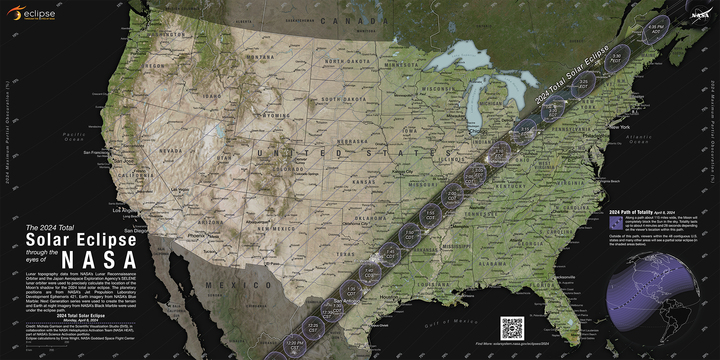
What To Expect In The Path Of Totality
Those in the path will experience the sky go dark and, weather permitting, be able to see the sun’s outer atmosphere, called the corona. This white glow is usually unable to be seen because of the sun’s bright surface light.
Advertisement
“That’s one of the real breathtaking moments,” Thomas said of this ring of light which NASA scientists have said they hope to better study during the eclipse.
Viewers can also expect to experience a temperature drop of about 10 degrees Fahrenheit (5 degrees Celsius) depending on the local humidity and cloud coverage, according to NASA.
There may also be noticeable changes in the behavior of insects and animals.
Once the sky goes dark, birds may stop singing, crickets and cicadas may start chirping, fireflies may start flashing, and bees may abruptly stop flying, according to past documented incidents. One 2017 study found that approximately 75% of observed animal species in a South Carolina zoo exhibited some behavior response to the eclipse, with the most common appearing to be anxiety.
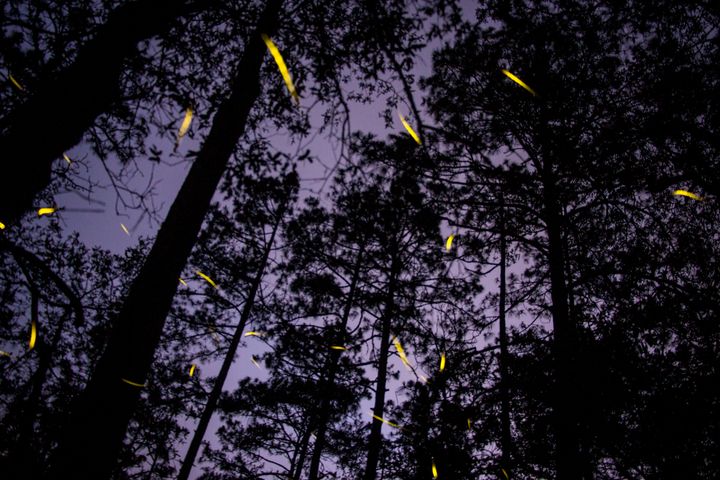
picture alliance via Getty Images
Astronomer and eclipse chaser Dr. Douglas Duncan, who is the director of the Fiske Planetarium at the University of Colorado, has also described seeing whales and dolphins breach in the minutes before the sun vanished.
Advertisement
“We were on a small boat and five minutes before total totality, every whale and dolphin in the vicinity surfaced and swam back and forth and watched the eclipse with us. Five minutes after total totality, they all swam away,” he recalled a 1998 experience in the Galápagos Islands.
(Check out this video of the sky going black during a total eclipse in Casper, Wyoming, back in 2017.)
What You’ll Need To Watch
Specialized solar eclipse glasses are a must to take full advantage of the spectacle.
Staring at the sun without protection will instantly cause severe eye injury. This includes looking at it through a camera lens, binoculars, or a telescope that doesn’t have a special-purpose solar filter secured on the front. Regular sunglasses, no matter how dark, also won’t cut it, NASA advises.

Mark Wilson via Getty Images
Thomas also recommends using a filter on your phone or camera if you plan to take pictures of the sun before or after totality. (One video posted to YouTube shows a man melting his camera while focusing it on the sun. An online camera rental company has also shared photos of damaged equipment after its use during the 2017 eclipse.)
Advertisement
Those wanting to snap a photo of the sun on their phone can also place a spare pair of eclipse glasses up to the phone’s lens for protection, said Thomas.
Once the sun is completely blocked out, viewers can remove their glasses. Those watching a partial solar eclipse must keep their glasses on to safely continue looking at the sun.
Where To Find Glasses
Solar glasses are relatively affordable and easy to come by, at least with some pre-planning.
Many major retailers have been selling the disposable eyewear, including Kroger, Wegmans, Meijer, Walmart, Cracker Barrel, Staples, Lowes, The Home Depot, Buc-ees and 7-Eleven, according to a list compiled by the American Astronomical Society (AAS).
Some places like local libraries and eyeglasses retailer Warby Parker have also been providing free pairs in limited quantities.
To ensure that your glasses are authentic, and not counterfeit, look for glasses certified by the International Organization for Standardization. They will have an ISO-certified stamp on them.
Advertisement
The AAS also has a list of ISO-certified glasses that can be purchased on Amazon here.
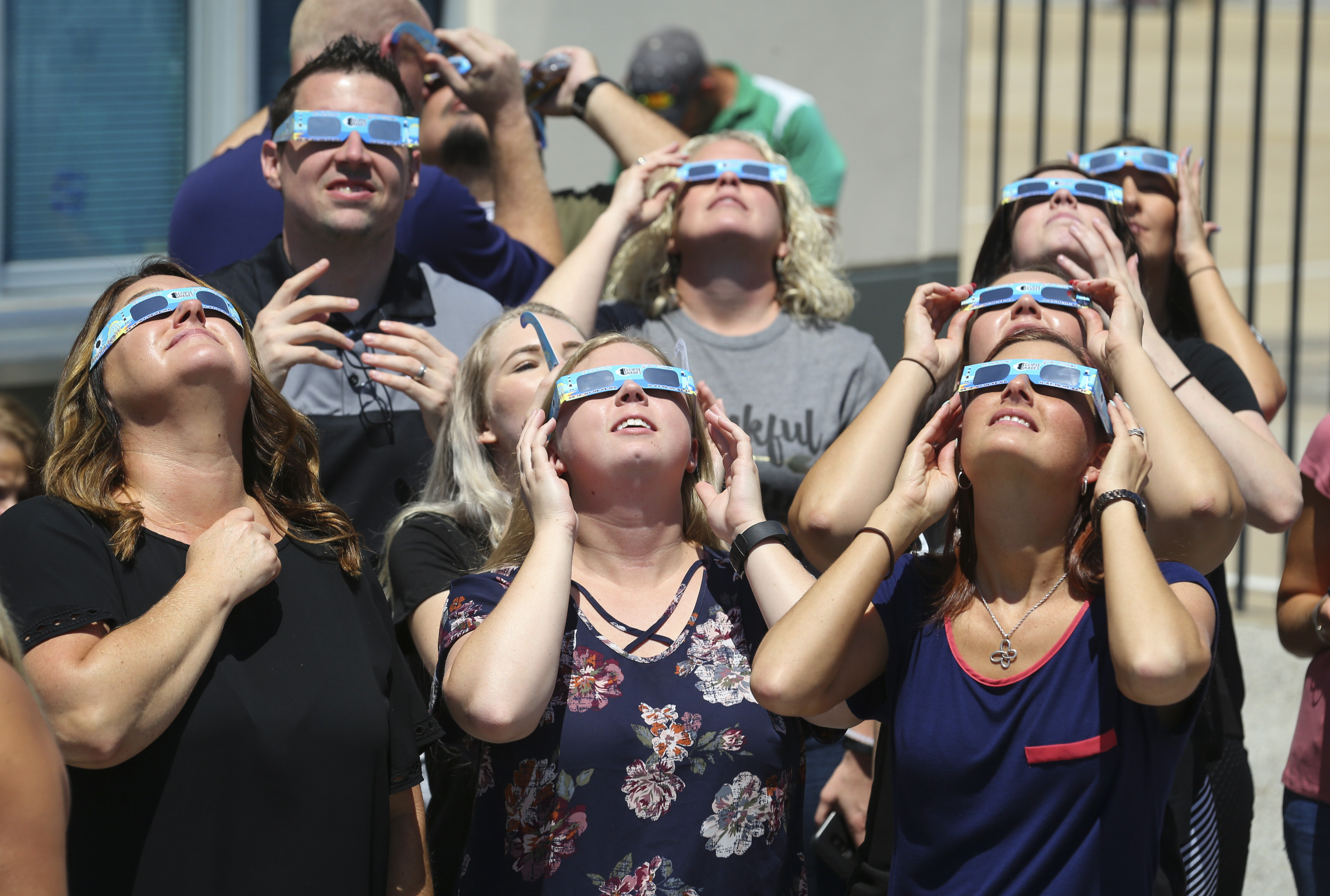
Richard Rodriguez via Getty Images
How To Watch Without Glasses
There are ways to indirectly watch the eclipse without using specialized glasses.
One option is creating a pinhole projector using a stiff piece of paper (like a paper plate) or a cardboard box.
The paper method is the simplest option and ideal for several people wanting to watch at once. Simply punch a small round hole in the paper and position it so that the sunlight shines through the hole onto the ground, or on a sheet of white paper. This light is a projected image of the sun. As the eclipse starts, the image’s shape will change with it. See full instructions here.
Another option is constructing a box pinhole projector, which allows a single user to watch the eclipse while standing with the sun shining from behind. A projection of the sun will then appear while looking inside the box.
Advertisement
See full instructions here, or watch a how-to video here.
If you end up completely empty-handed, and not in the path of totality, go near trees with leaves. Sunlight shining through any holes in the leaves will cast unique, crescent-shaped shadows on the ground or other objects below, like a pinhole lens.
However you enjoy the event ― we repeat ― just make sure you don’t look directly at the sun without proper protection.
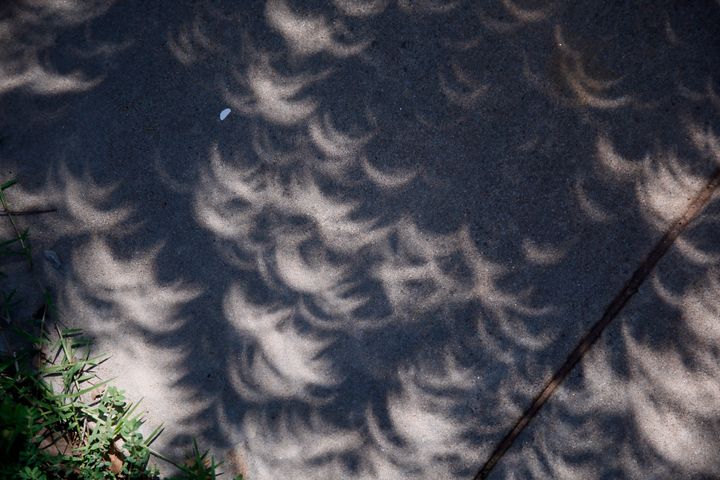
via Associated Press

Comments are closed.